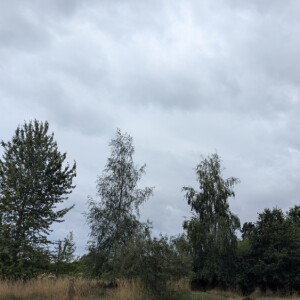Lime Nail-Gall Mite
As well as fruit trees - and, more recently, interplanted non-fruit trees - in the orchard, we have over the years put various trees around the boundary. This has not been very systematic or strategically planned - just some individuals that took our fancy from time to time. I don't think I've ever really had it in my head that, if you plant a sapling (some of them have been only a few tens of centimetres tall when they first arrived), one day you will have a real, genuine tree
Because we visit so often, usually concerned with bees or fruit or grass or hedges, and because they are always there and changing so slowly, it is probably only once a year, if that, that I actually take real notice of these trees. Today, it really hit me that the balsam poplar - a present from our children, planted perhaps 20 years ago - is a proper tree with a substantial girth, a handsome presence. The two silver birch trees, slightly younger, have robust trunks - they are not going to get pushed around by wildlife. They are big enough to offer me protection, rather than the other way around
The analogy with children is not lost on me
The lime tree - planted with bees, in mind - is probably only 10 years old, but that is long enough to have a developed crown, dense leaves, to start producing flowers. A small proportion of this year's honey will have come from it. The main is some of its lower leaves. Nothing to get alarmed about; in fact rather charming
A tiny mite, barely visible without magnification spends the winter sheltering in fissures in the bark or around the buds. When the leaves emerge, it lays eggs on them. The young penetrate the leaf and live on the sap of the tree. At the same time, they release chemicals that act like plant hormones, and distort the growth of the leaf, producing these sealed hollow tubes that protect the mite while it grows. Before autumn, it emerges, returns to buds or trunk and the cycle begins again. There is no evidence that it has any significant effect on the tree
Altogether, a testament to the ingenuity of life and the plasticity of development, particularly of plants. I love it


Comments
Sign in or get an account to comment.


